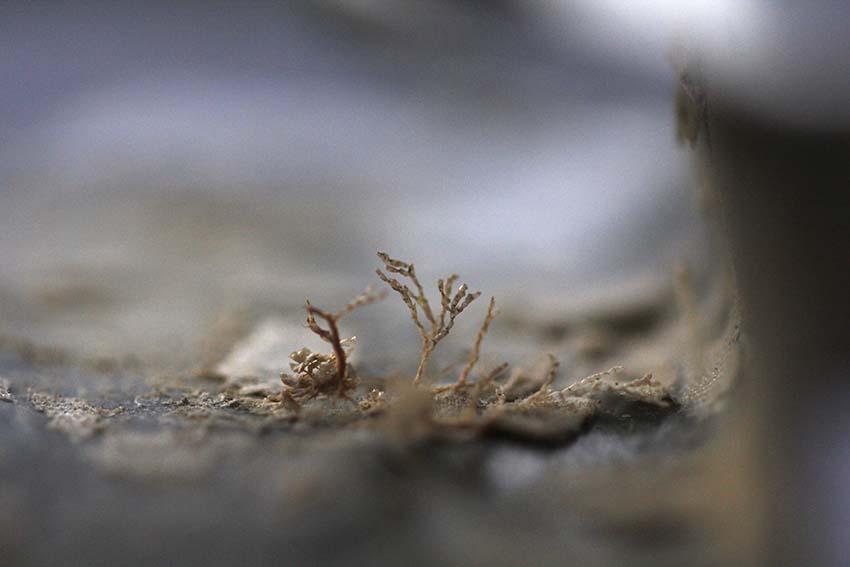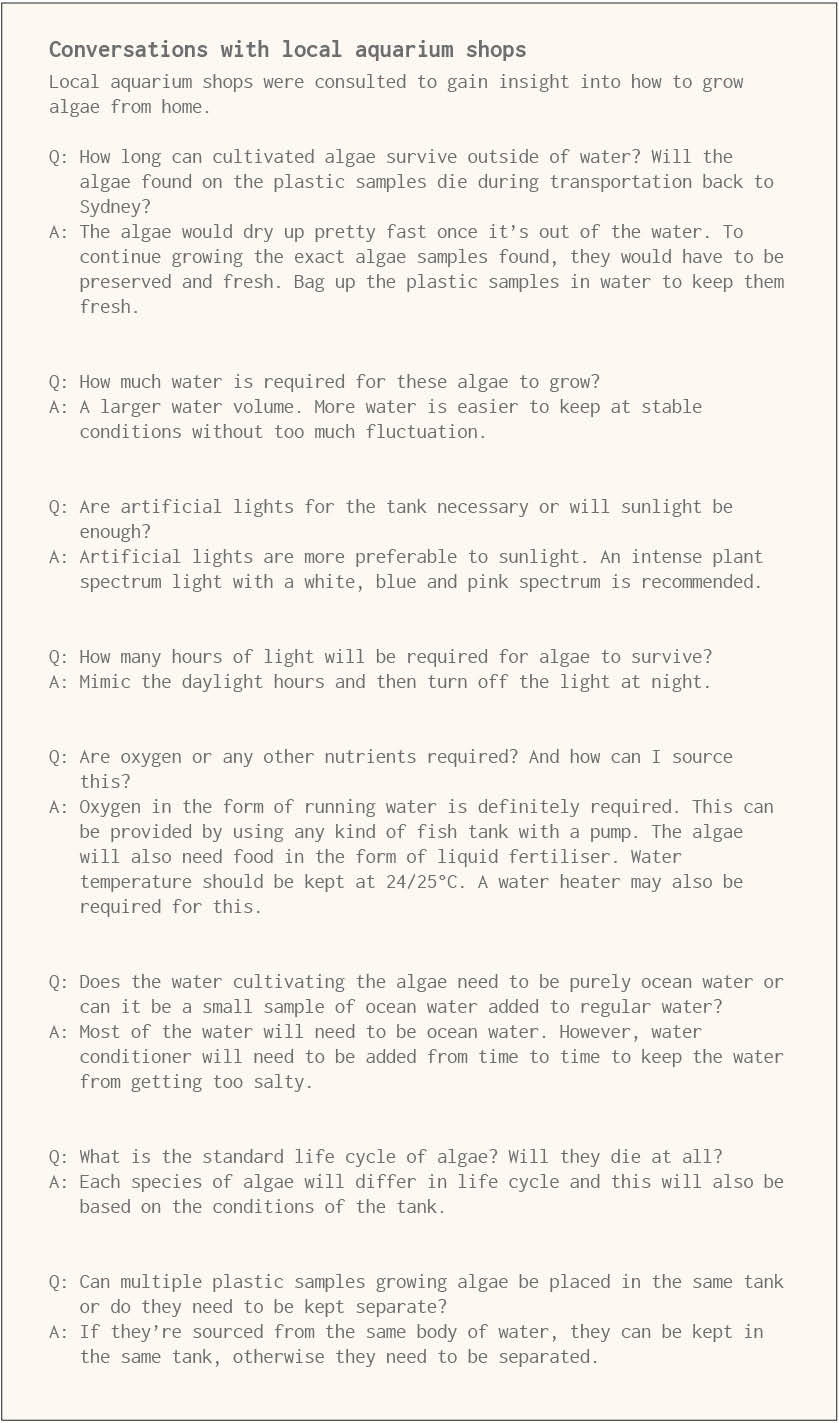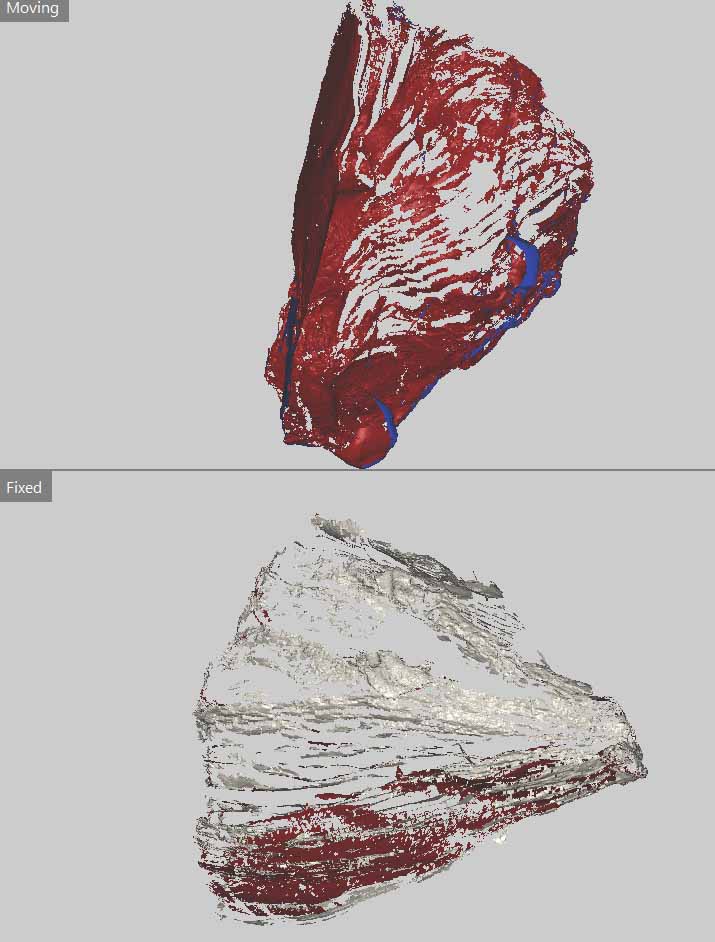Approach Two:
Material Experiments
Due to my concern that the experiments in Approach One were too literal and two-dimensional, this approach seeks to explore more material methods of communication. It intends to embed meaning through the form of the outcomes produced, and imply rather than prescribe interpretive readings of the work.
Experiment
Growing algae

Aim
This experiment proposed to explore how to regrow the algae on the surfaces of the warped plastics. By producing a living organism like algae, and by demonstrating how a ‘non-living’ and ‘dead’ material such as plastic could interact with marine environments to support life, my intention was to promote wider realisations that plastic still exist after disposal, and that they have lives.
Precedents
This experiment sought to visualise the findings of Experiment: A Typology of Marine Organisms in more materially engaging and evocative ways. It sought to demonstrate ideas of the more natural and live nature of plastic waste realised in this experiment.

Methods
Without knowing much about the process of growing algae, I drafted a plan in which the algae found on the plastics could be regrown in a fish tank with the right conditions. To find out if this experiment was even possible, I consulted local aquarium shops and algae experts; I asked questions such as the conditions the algae needed to survive, whether the algae could be regrown and whether the algae would self-propagate.
However, after conversations with algae experts and professionals (Figure 22), it became evident that re-growing the existing algae would be impossible as they had already dried out and died. To go through with this idea, a large amount of manipulation on my part (such as finding an algae sample to glue onto the plastic, and supplying it with CO2 and oxygen) would be needed.
However, after conversations with algae experts and professionals (Figure 22), it became evident that re-growing the existing algae would be impossible as they had already dried out and died. To go through with this idea, a large amount of manipulation on my part (such as finding an algae sample to glue onto the plastic, and supplying it with CO2 and oxygen) would be needed.
Reflection
This experiment highlights my attempt to introduce more layers of meaning to these plastics in order to facilitate consumers interpreting these plastics ecologically. Specifically, it demonstrates my consideration of the lens of liveliness and of plastics as being alive as a potential pathway for accessing this. However, the original integrity of this experiment—which planned to re-create a natural, spontaneous process—became compromised with micro-managed and artificial processes. This experiment was thus abandoned.
Insights
While no outcome was made for this experiment, thinking through and imagining a living, plastic, generative system had potential to tangibly demonstrate the afterlives of plastic waste. This idea of an independent plastic life existing outside of and without humans was an idea I wanted to pursue further, and was explored later in Experiment: Automated documentation of plastic.
Experiment
Fossilised Plastic


Aim
To create a fossil artefact that would facilitate conversation about the future state of plastic in the world and our deep time footprints.
Precedents
Ideas from Jazvac’s Plastiglomerate (2013) that plastic is a part of our geological record are built on in this experiment to consider the geological imprints these plastics will leave in our world.
Methods

Reflection
While this experiment did consider more creative methods of communication, I wasn’t entirely comfortable with the idea of creating more objects to critique the waste of our existing ones. As such, this experiment was deemed an exercise for thinking through more material ways of communicating and eventually abandoned.
Insights
Although dissatisfied with these means of making, this lens of deep, geological, future time—and framing the plastic through these stories—was intriguing. These were concepts that I wanted to unpack and explore further.
Conclusion for
Approach Two: Material Experiments
While at first it was disheartening that nothing was made in this round of experimentation, the act of imagining and exploring particular scenarios highlighted ideas to explore further. Through these experiments I began to speculate and consider what these plastics could be saying and representing. They introduced potential stories about how plastics exist outside of humans, and how they will do so for a very long and deep timespan. My intentions in this research thus shifted to expand upon, articulate and access these stories as a way to facilitate ecological thought and dialogue in consumers, and are continued in later experiments.